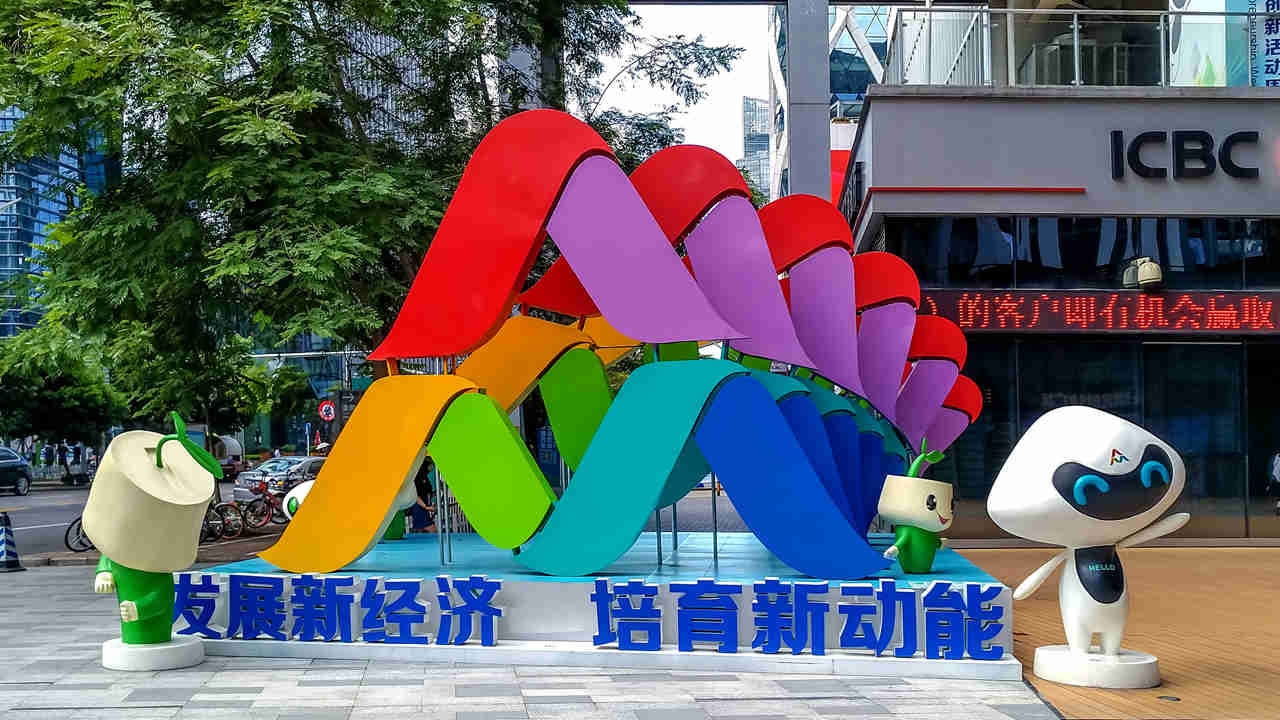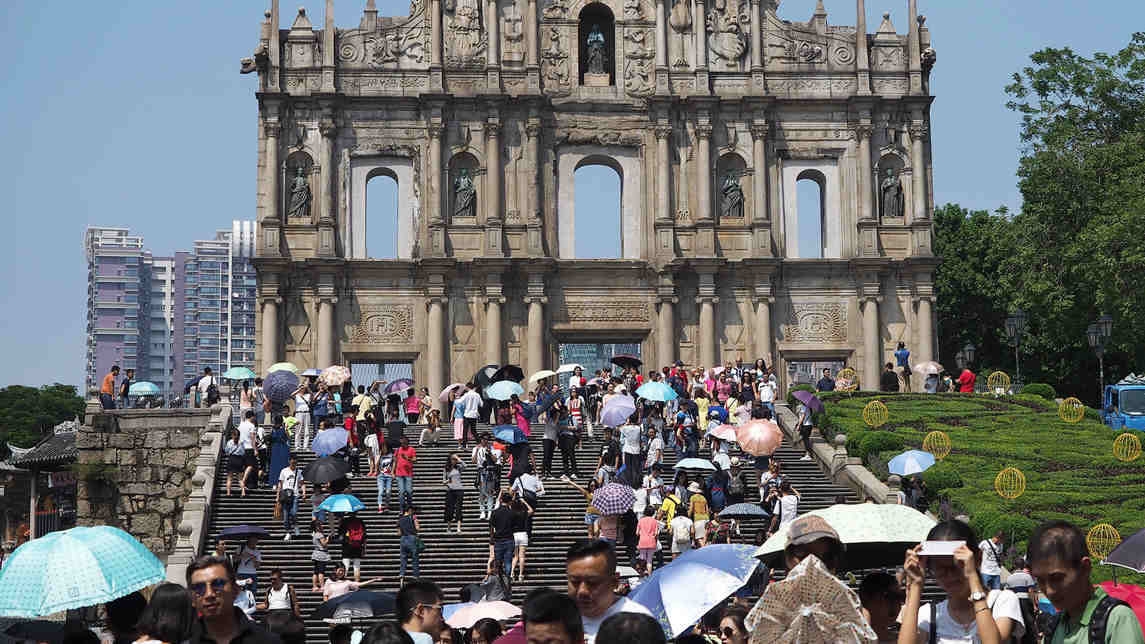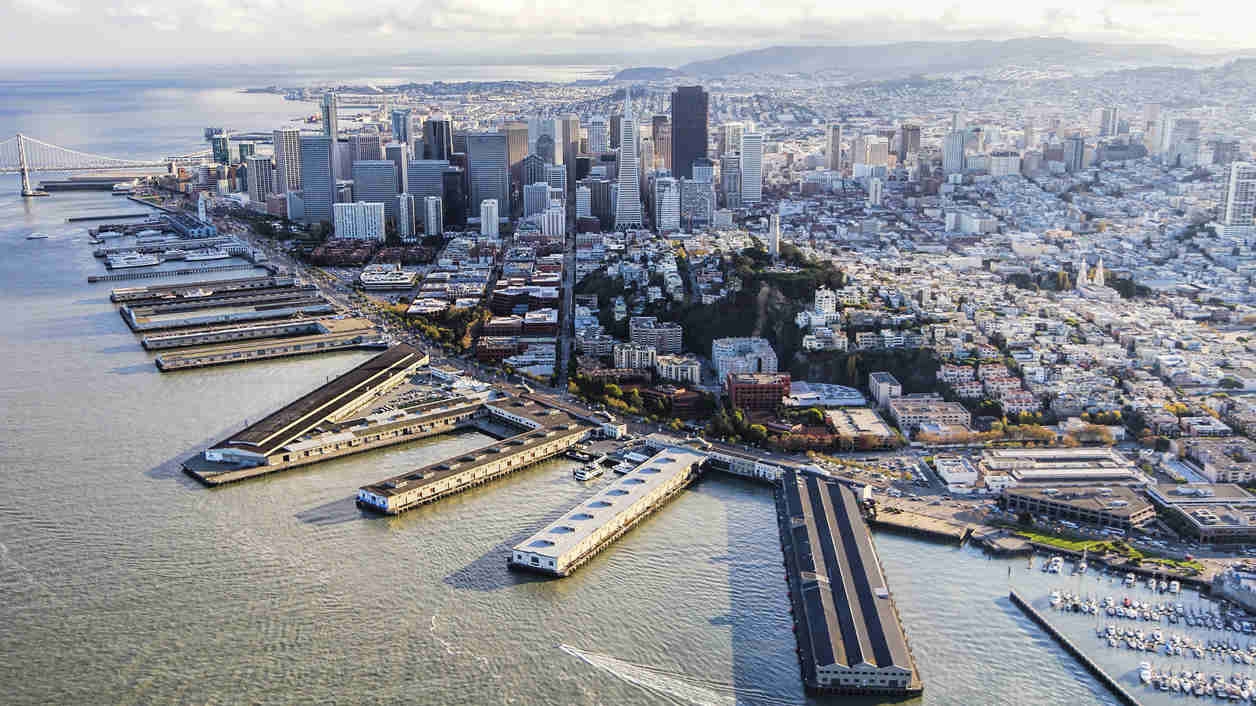By CGTN’s Cheng Lei
China’s plan to integrate Guangdong, Hong Kong and Macao into a “Greater Bay Area” to rival similar bay clusters in Los Angeles, New York and Tokyo is impressive in its scale.
It would be the world’s biggest such area anywhere in the world as it occupies 0.6 percent of China’s landmass, and it also accounts for 13 percent of its GDP.
And that number would get bigger when Guangdong’s tech and manufacturing power combines with Hong Kong’s global reach and Macao’s service sector strength.
To get synergies from three such different economic regions, free flow of goods, people and ideas are all needed.

Shenzhen software industry base /VCG Photo
As the Hong Kong-Guangdong high speed railway and the Hong Kong-Zhuhai-Macao Bridge will form the hard infrastructure, companies in the area are expected to offer ideas.
Entrepreneurs like Tencent founder Ma Huateng, and SF Express founder Wang Wei, are putting their clout behind the Greater Bay Area plan with a talent exchange program that should get ideas flowing.
Innovation in automobiles is an area particularly ripe for development, with greater demand for transport to back up the new urban lifestyles that will come with this integration.

Macao’s famous scenic spots Ruins of St.Paul /VCG Photo
Looking at the map of the Greater Bay Area, Macao may seem the weakest link of the three cities, but its role is unique, especially in the tourism area.
Fanny Vong, president of the Macao Institute for Tourism Studies, believes financial services and technology should not be the only focuses in the area and that tourism can propel the economy.
“In the past 10 years, we have experienced phenomenal growth in tourism development, particularly in gaming and entertainment. In fact, there are various other sectors in Macao that are also growing together. There is also a lot of investment in the Macao peninsula,” Vong said.

San Francisco waterfront /VCG Photo
The natural comparison is with San Francisco’s Bay Area, home to many of the world’s biggest tech companies. Sean Randolph, president and CEO of the Bay Area Council Economic Institute, compared San Francisco’s path to success to the one south China is starting out on.
He said there are a number of differences. “One is that San Francisco’s Bay innovation economy didn’t grow up because of any government plan. The other thing was support for development of research universities to attract talent from everywhere. The other takeaway was support from entrepreneurs.”










